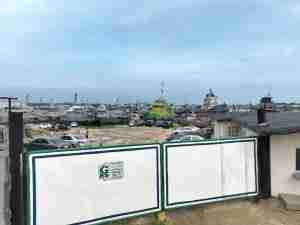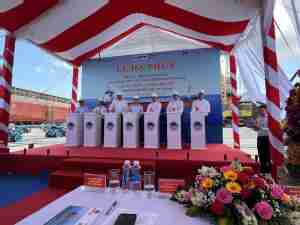By Peter A. Buxbaum, AJOT
Nearly $150 billion must be invested to expand the nation's freight rail infrastructure over the next 30 years in order to provide adequate rail capacity to meet future demand. That was the key conclusion of the National Rail Freight Infrastructure Capacity and Investment Study released on September 20.
The study, conducted by Cambridge Systematics, paints a dire picture if freight rail capacity is not increased. "Without this investment,' the study concluded, '30% of the rail miles in the primary corridors will be operating above capacity by 2035, causing severe congestion that will affect every region of the country and potentially shift freight to an already heavily congested highway system."
The study highlights needed investment in new tracks, signals, bridges, tunnels, terminals, and service facilities that railroads need to keep pace with demand for rail freight transportation. It also touts a proposed federal investment tax credit as the key ingredient to encourage investment in rail capacity. Freight rail traffic is projected to double over the next 30 years
Industry experts agree that investments in rail capacity are required to keep up with demand. But some rail customers are less than enthusiastic about a tax credit that would benefit railroads without changing the service levels and rate considerations that some shippers receive.
The study found that most of the required investment, $135 billion, will be needed on the Class One railroads. The study also notes that under current conditions, the railroads will be able to raise around $96 billion of the required amount. But the gap of $1.4 billion per year, the study concluded, should be funded through railroad infrastructure tax incentives, public-private partnerships, and other sources.
One industry expert agreed with the study's conclusion that further investment in rail capacity is needed. 'Most of the low hanging fruit in terms of productivity has been captured,' said William Rennicke, a director at Oliver Wyman a management consultancy in Boston. 'Significant investment will be needed to generate further productivity improvements.'
Growth in the intermodal sector, consisting mainly of container imports, is a key component of the projected growth in traffic that will require the additional investments, Rennicke noted. 'Total US container traffic is projected to grow at around six percent annually in the near term, faster than GDP, requiring investment in infrastructure serving key markets,' he said. 'Railroads have not been able to fund all of their capital investment requirements from cash flow.'
Some rail customers have opposed the funding of rail infrastructure investment with the proposed federal investment tax credit now pending before Congress without attaching further conditions to receiving that benefit. The Railroad Investment Tax Credit of 2007 would provide a 25% tax credit to any company that invests in projects to increase the rail network's capacity. The major Class One railroads are behind the push to pass the legislation.
'Some level of investment tax credit may be sound national policy,' said Gary Spitzer, vice president and general manager of DuPont Chemical Solutions Enterprise in Wilmington, DE, 'but only if it is part of a comprehensive solution to rail reliability problems and the overall infrastructure problems of the entire US transportation industry.'
Spitzer also noted that there are two other bills pending in Congress, one that would encourage increased rail competition and another that would remove some antitrust exemptions the rail industry has enjoyed. 'The railroads' desire for this tax credit may give the Congress an opportunity to address both the concerns of the major railroads and the legitimate concerns of rail customers,' he said. 'To be effective, any investment tax credit provided to the rail industry must be coupled with provisions in the other pieces of legislation Congress is currently consi










